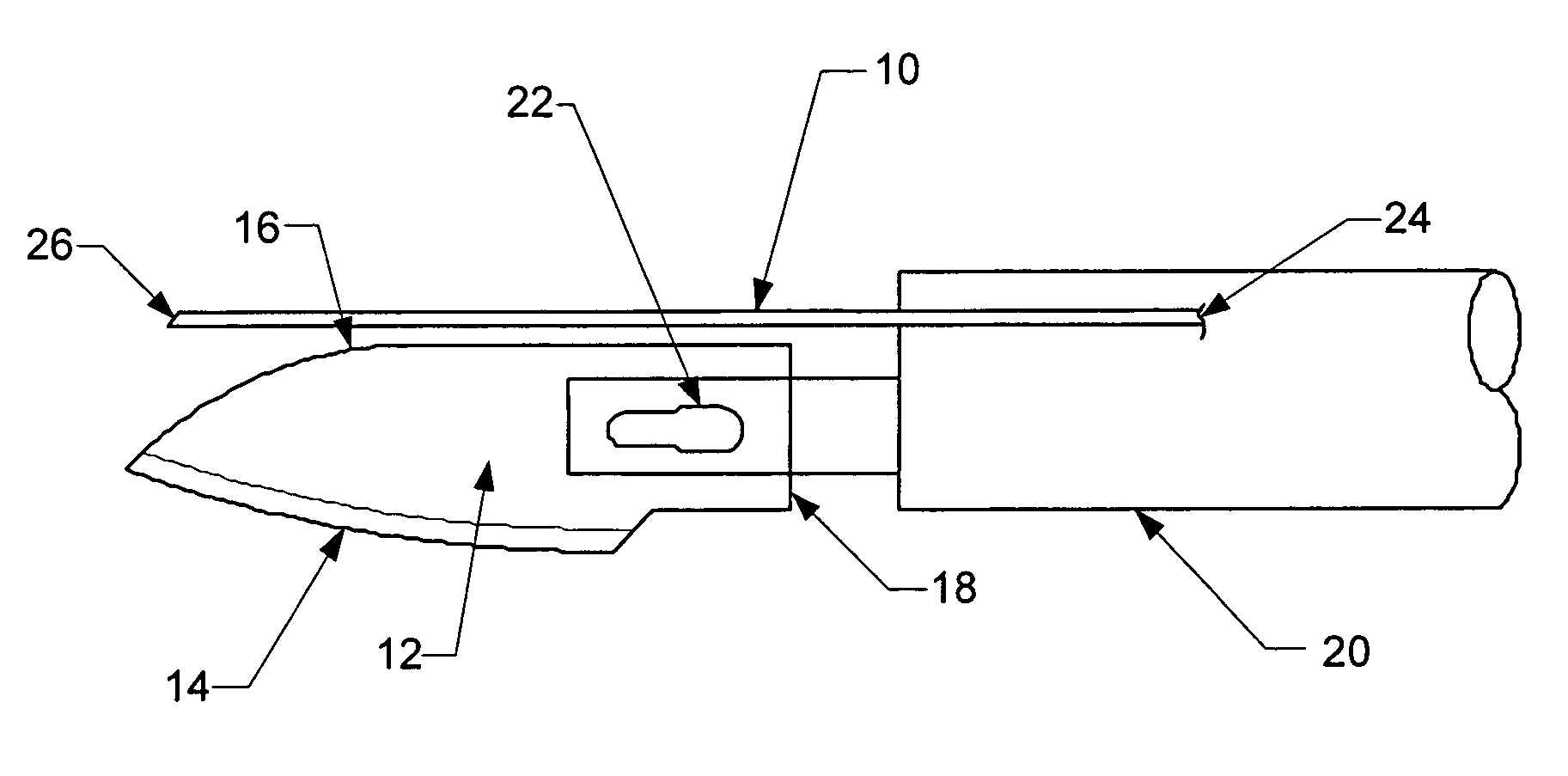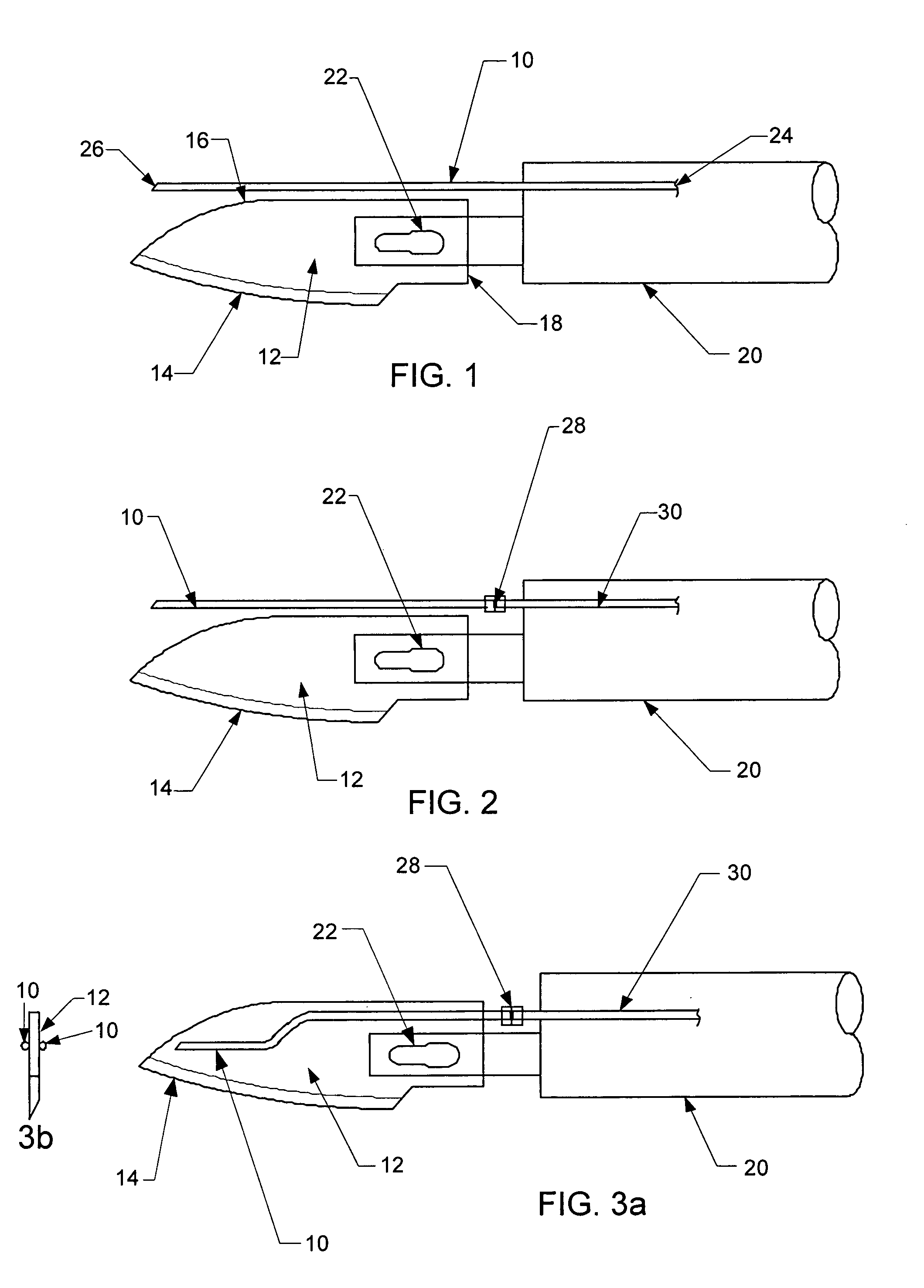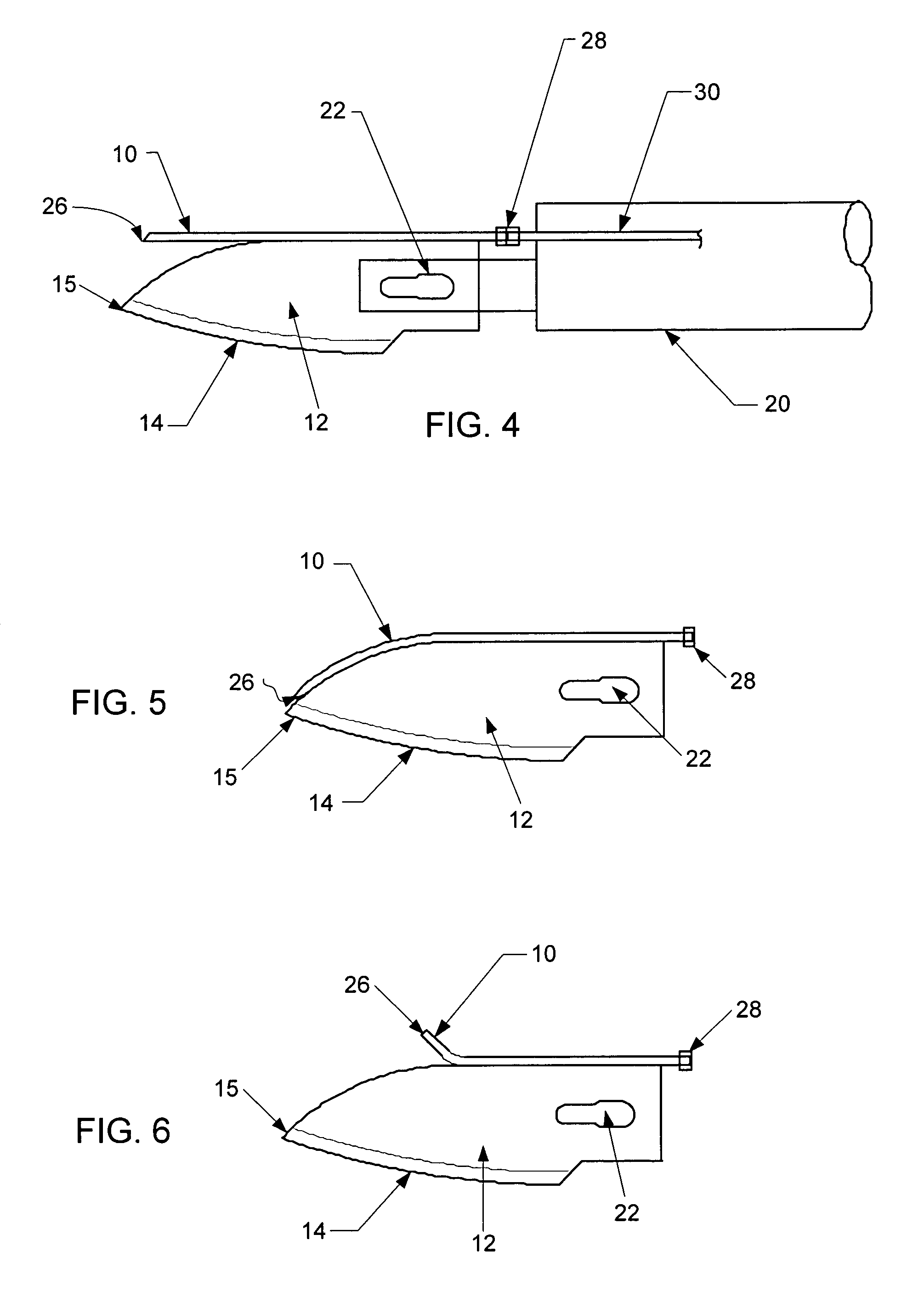Cauterizing scalpel blades
a scalpel blade and scalpel technology, applied in the field of surgical cutting instruments, can solve the problems of limited cauterizing ability, undesired blood flow, and the cutting of tissue of patients' tissue accompanied by the cutting of tissu
- Summary
- Abstract
- Description
- Claims
- Application Information
AI Technical Summary
Benefits of technology
Problems solved by technology
Method used
Image
Examples
first embodiment
[0029]the present invention, as shown in FIG. 1, comprises a conduit in the form of a needle 10 in close proximity to a scalpel blade 12. The blade 12 has a cutting edge 14, a non-cutting edge 16, and an edge 18 distal to the cutting edge 14. The embodiment includes a handle 20 and a means 22 for releasably attaching the blade 12. The needle 10 has an inlet 24 and an outlet 26, and is affixed to the handle 20 in a manner such that the outlet 26 is in a predetermined position relative to the blade 12. The needle further includes a catalyst disposed near the needle outlet 26. This embodiment positions the source of heat near the non-cutting edge 16 of the scalpel blade 12. The needle 10 has an inner diameter of less than 400 micrometers with the inner diameter preferably about 200 micrometers. As used hereinafter, the term needle will mean a conduit of any form that meets the limitations on the inner diameter.
[0030]A gas mixture flows from a conduit inlet 24 through the conduit 10 and...
third embodiment
[0034]FIGS. 4, 5, and 6 show various configurations for the needle 10 relative to the blade 12. The needle 10 can be affixed to the blade 12 for further rigidity in holding the needle 10 in a fixed orientation relative to the blade 12, creating a needle-blade assembly. In this embodiment, a portion of the needle 10 is affixed along the non-cutting edge of the blade 12, allowing for the outlet 26 of the needle to be positioned either near the tip 15 of the blade as in FIG. 5, or away from the tip 15 as in FIG. 6. The needle-blade assembly is releasably attached to the handle 20 via two connections, a blade mount 22 and a needle fitting 28. The needle 10 can be affixed to the blade 12 by any suitable process, and includes welding, brazing, soldering, and adhesives. As shown in the FIGS. 4–6, the needle 10 is bent or straight to provide heat release at the tip 15 of the blade 12, or at some position removed from the cutting edge 14. The use of a needle 10 with the heat release at the b...
PUM
 Login to View More
Login to View More Abstract
Description
Claims
Application Information
 Login to View More
Login to View More - R&D
- Intellectual Property
- Life Sciences
- Materials
- Tech Scout
- Unparalleled Data Quality
- Higher Quality Content
- 60% Fewer Hallucinations
Browse by: Latest US Patents, China's latest patents, Technical Efficacy Thesaurus, Application Domain, Technology Topic, Popular Technical Reports.
© 2025 PatSnap. All rights reserved.Legal|Privacy policy|Modern Slavery Act Transparency Statement|Sitemap|About US| Contact US: help@patsnap.com



